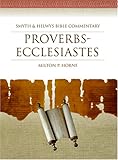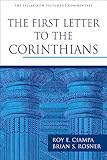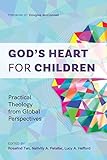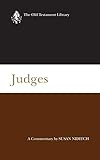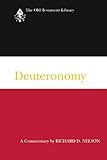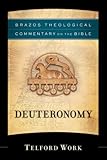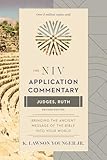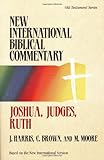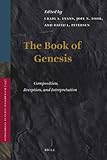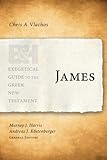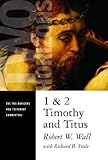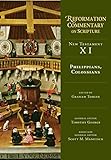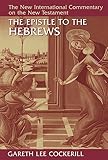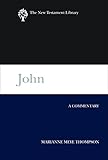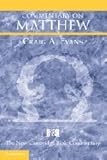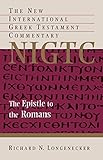Back to the Garden: Paul’s Appeal to Adam and Eve as an Illuminating Allusion to 1 Timothy 2:11–15
Churchill, Sarah 2000
Back to the Garden: Paul’s Appeal to Adam and Eve as an Illuminating Allusion to 1 Timothy 2:11–15 - Johannesburg South African Theological Seminary 2024 - 319 PDF A4 Abstract, TOC, Works Cited List
No text may be more disputed than 1 Timothy 2:12 and its contribution to a woman’s role in ministry. Adding to the complexity, γὰρ (“for”) ensures no complete interpretation of verse 12 prevails without the allusion to Adam and Eve in verses 13–14. The majority of pertinent research utilizes Adam and Eve by asserting the normative nature of Genesis or explaining the presence of Genesis to false teaching, analogy, or illustration. Despite various interpretive solutions, many studies failed to answer the fundamental question of how the Old Testament allusion is interpreted in the New Testament. Thus, the research engaged and expanded the literature apropos to the allusion’s function and relation to verse 12. The study advanced that the form and content of Paul’s allusion to Adam and Eve must be discerned in its Old Testament context before making assertions about the transcultural and diachronic nature of the 1 Timothy 2:11–15 illocution. The study furthers previous understanding of how Adam and Eve fit into 1 Timothy 2:11–15 by starting with an exegetical analysis of Genesis and then inspecting the history of interpretation in Second Temple Judaism to present an exegesis of 1 Timothy 2:12 within the light of Adam and Eve. To do so, the study applied an intertextual methodology. The dissertation examined the Old Testament context, extra-biblical literature, and the New Testament context before exegeting 1 Timothy 2:11–15 and proposing the theological and practical significance. In conclusion, Paul’s allusion to Adam and Eve in 1 Timothy 2:13–14 represents a redaction summary of the Creation account in Genesis 2:4–25 and the account of the Fall in Genesis 3:1–24. First, the apostle specified Adam’s creation before Eve because of man’s authority and responsibility given in Genesis 2–3. Second, Paul drew upon Eve’s deception in 1 Timothy 2:14 to stress the order of creation and the tactic of the serpent. By implication, the research encouraged the theological education of women but recognized that the 1 Timothy 2:11–15 illocution precludes women from eldership and key teaching roles in the ecclesia.
Women in church work
Old & New Testament
Pauline churches
Back to the Garden: Paul’s Appeal to Adam and Eve as an Illuminating Allusion to 1 Timothy 2:11–15 - Johannesburg South African Theological Seminary 2024 - 319 PDF A4 Abstract, TOC, Works Cited List
No text may be more disputed than 1 Timothy 2:12 and its contribution to a woman’s role in ministry. Adding to the complexity, γὰρ (“for”) ensures no complete interpretation of verse 12 prevails without the allusion to Adam and Eve in verses 13–14. The majority of pertinent research utilizes Adam and Eve by asserting the normative nature of Genesis or explaining the presence of Genesis to false teaching, analogy, or illustration. Despite various interpretive solutions, many studies failed to answer the fundamental question of how the Old Testament allusion is interpreted in the New Testament. Thus, the research engaged and expanded the literature apropos to the allusion’s function and relation to verse 12. The study advanced that the form and content of Paul’s allusion to Adam and Eve must be discerned in its Old Testament context before making assertions about the transcultural and diachronic nature of the 1 Timothy 2:11–15 illocution. The study furthers previous understanding of how Adam and Eve fit into 1 Timothy 2:11–15 by starting with an exegetical analysis of Genesis and then inspecting the history of interpretation in Second Temple Judaism to present an exegesis of 1 Timothy 2:12 within the light of Adam and Eve. To do so, the study applied an intertextual methodology. The dissertation examined the Old Testament context, extra-biblical literature, and the New Testament context before exegeting 1 Timothy 2:11–15 and proposing the theological and practical significance. In conclusion, Paul’s allusion to Adam and Eve in 1 Timothy 2:13–14 represents a redaction summary of the Creation account in Genesis 2:4–25 and the account of the Fall in Genesis 3:1–24. First, the apostle specified Adam’s creation before Eve because of man’s authority and responsibility given in Genesis 2–3. Second, Paul drew upon Eve’s deception in 1 Timothy 2:14 to stress the order of creation and the tactic of the serpent. By implication, the research encouraged the theological education of women but recognized that the 1 Timothy 2:11–15 illocution precludes women from eldership and key teaching roles in the ecclesia.
Women in church work
Old & New Testament
Pauline churches

